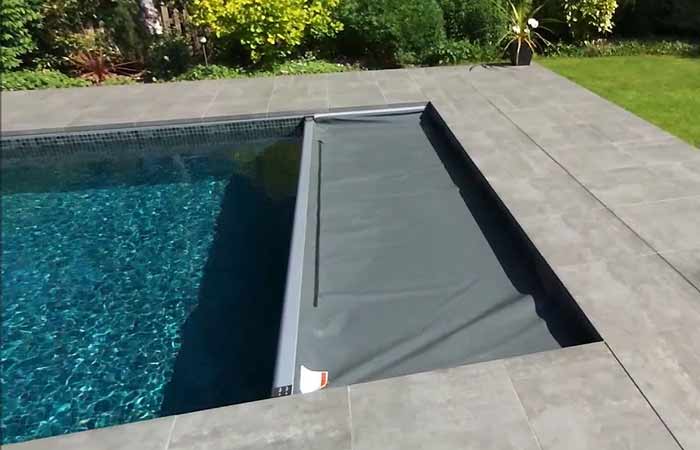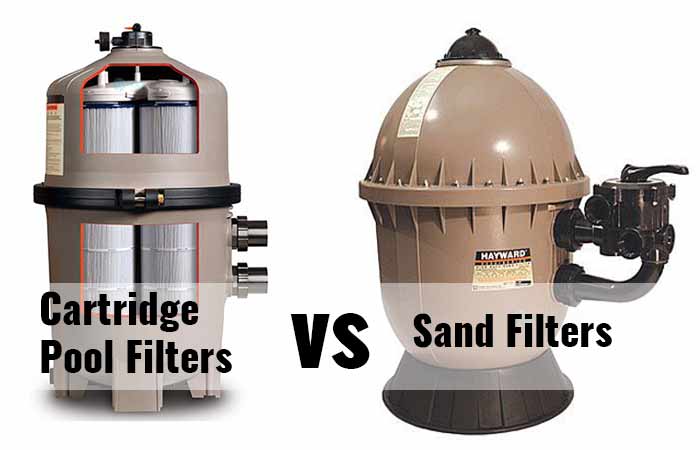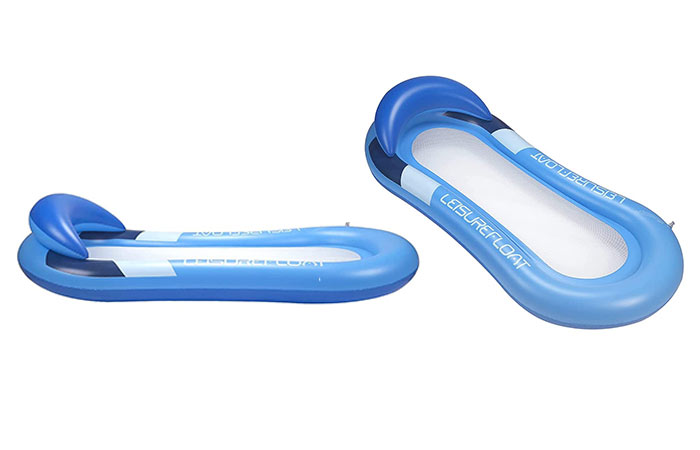Swimming Pool Retaining Wall & Drainage Ideas
Retaining walls are walls build on the hilly side of the pool to keep drainage from rainfall from going into the pool water. They can also be added to add more room to the pool by cutting into the hilly side of it or to allow for perimeter space around the pool.
While the primary role of a retaining pool is to prevent runoff from the rain from draining into and messing up the pool water, these walls can also be used to beautify the pool by adding water features such as water spouts, waterfalls, a raised spa, a raised spa, pool deck spaces and many more. You can even add bushes to the retaining wall to act as a barrier against winds that can blow leaves and other dirt into the pool water. A retaining wall can also be used to restrict access to the pool by acting as a barrier.
Determining whether you need a retaining wall for your pool is important as it also helps determine what type of wall you need and even its features. If the land around the pool is flat and plain, you don’t need a retaining wall although you can still build one. If, on the other hand, the land around the pool is either hilly or sloping to one side, a retaining wall is a necessity as it helps keep the pool free of runoff from rainfall.
Do I Need a Retaining Wall for my Pool?
The factors determining whether you need a retaining wall for your pool or not include the following:
- Steepness of the yard. If your yard slopes steeply to one side, you need a retaining wall on the upper side. If the yard or the plot of land the pool is on is just flat, you don’t need one.
- The terrain of the land around your pool. Even when your yard is flat, there might be a hill or drop off area around the place. Such a feature will necessitate the building of a retaining wall since water from rainfall will still find its way into your pool.
- The stability of the land upslope. If the land upslope is loose, it’ll likely erode into your pool. With a retaining wall, you not only prevent it from soiling the pool but prevent its erosion as well. This preserves the land.
A retaining wall will cost from $1000 all the way to $20000 or even more. It depends on its size and complexity and the type as well.

Types of Pool Retaining Walls
The options available for your pool retaining walls are as follows:
Slabs
A slab made of concrete is the most durable and permanent type of retaining wall for swimming pools. It can be either poured slab or a concrete slab as deemed appropriate. Such walls, however, aren’t the best for serving as retaining walls for small backyards and pools. Instead, they’re the best for large pools where they are called gravity walls. Basically, they’re too large and costly for small backyards.
Blocks
Another very durable type of retaining wall is made using interlocking concrete blocks. When these are used, the wall will be known as a segmented retaining wall. When built right, segmented retaining walls are some of the best as they offer more flexibility than slabs for example, and they’re still very strong and durable.
Boulders
With boulders which occur naturally, you can quickly build a retaining wall with great features. These boulders allow for easy drainage of the water rainfall runoff and can be arranged into a beautiful landscape with water features such as fountains, foliage and more.
The best size of boulders to use is between 18 and 24 inches. Such walls will need to be fixed properly to prevent the boulders from falling into the pool as it’ll be quite hectic getting them out.
Timber
A series of pressure treated timber planks measuring 6 x 6 is used to build a timber retaining wall for some swimming pools. Such walls aren’t usually as durable and strong as those made with boulders or slabs for example and will need to be reinforced for them to withstand the weight of the water from the rainfall runoff. To do this, perpendicular deadman supports are added on every third course of the wall to keep it strong.
Timber walls should only be used when the runoff isn’t that heavy and the slope behind the pool isn’t that steep. Otherwise, it’ll be tough keeping the runoff from entering the pool as it’ll easily pass through. This also means that the construction of the wall needs to be very reliable otherwise water can find its way in between the planks of wood used in constructing the wall.
Stones
Stones can be used to construct a retaining wall which will be quite sturdy and durable. However, stones such as field stones and flagstones are used mostly to finish off retaining walls made of concrete blocks. Cap stones are then used to decorate and strengthen the top of the retaining wall. This method can also have bricks used in the place of stokes.
Any of there materials will do a good job when used to make a retaining wall. However, if there’s a lot of runoff from the rain, use the more durable materials such as stone and blocks rather than wood which can rot away and is also structurally weaker.
How to Build a Swimming Pool Retaining Wall
The process of building a retaining wall for your swimming pool is as follows:
1. Plan properly
As it is with anything good, you need to plan out exactly what you’re going to do before the construction of the retaining wall for your pool. For this one, you’ll need a detailed map of your area showing the elevation of different areas and any other important aspects. You then choose the size and location of your wall.
You need to know that the planning phase of this process entails choosing the location of the retaining wall such that it protects the pool from runoff water. As such, the wall needs to be between the higher ground and the swimming pool.
In the planning phase of this exercise, the aspects to focus on include the following:
- The type of materials to use.
- How to make the wall be aesthetically pleasing.
- The type of soil in your area. This is important in determining how to keep the wall drained and other aspects.
These aspects help settle on a solid plan rather than trying to change some aspects when the retaining wall is already constructed. For example, this is a great stage to construct the fountain or waterfall for the retaining wall alongside the construction of the wall itself.
2. Get the permits and any legal papers
Most small retaining walls 24 inches and shorter won’t need a separate permit from the one you obtained when constructing the swimming pool. The same holds true for a wall-less than 5 feet high as this height doesn’t require a separate permit from the authorities.
However, a wall higher than 5 feet will require an engineer’s plan that would be stamped in place to certify that you can construct such a structure. This is usually submitted together with the pool construction application.
In our expert opinion, you don’t need a retaining wall higher than 5 feet to protect your pool. Instead, go for two walls constructed next to each other like terraces. They’ll offer more protection to your pool and will be shorter than 5 feet hence voiding the need for a separate permit.
3. Excavate the area
Most retaining walls are to be constructed at the same time as the swimming itself. For this one, make sure the foundation for the wall is 24 inches wide and 18 inches deep on the minimum. The pool grader or excavator should do the digging and then you measure the depth and width of the trench dug to ensure it is of the right dimensions.
Also, ensure the wall is constructed according to the plan such that it covers the whole of the lower side of the slope towards the pool. This way, all the runoff water will be taken care of.
4. Add gravel
After digging the trench, compact the soil on the bottom of the trench with the excavator or grader then add gravel to it. The gravel should be at least 6 inches deep right on top of the base of the trench.
The gravel should also be compacted properly. The first course of the foundation should then be layered on top of the gravel.
To prevent soil from seeping through the wall, filter fabric should be added behind the wall from the foundation all the way to the top of the wall.
5. Construct the wall
After the foundation, the next step is constructing the wall all the way to the top. First, choose the type of materials you need to build the wall with. You have a choice between wood, bricks, stones, blocks and many others.
Whatever material you pick on, make sure you construct the first course (first row of the wall materials) at least 6 inches below the ground level. This is about 1/10th the height of the wall. Using a sledgehammer, drive long rebar pieces (steel rods) into the materials to holds the first course in place.
As you construct the wall, let it slightly lean towards the hill or upslope for the best results. Make sure you adhere to the height of the materials you’re constructing the retaining wall with as some material can’t go beyond a certain height.
6. Add drainage
You then place the perforated black pipe (the drainage tile) behind the wall as needed. Where exactly you place it depends on the type of soil and the height of the wall you have in place.
The pipe should then be covered in 6 to 12 inches of gravel to protect it. For the best results, the drainage ought to come through the wall at every 10 to 20 inches, at every low point, or at the end of the wall. The focus is on preventing the runoff water from staying stagnant against the wall as it’ll damage it eventually.
7. Add the backfill
The last major step is adding the backfill to the wall. The backfill is added behind the wall with free-draining materials to help keep the wall drained and dry at all times. On top of the landscape fabric, add gravel or sand as the backfill material.
After adding the backfill, add After adding the backfill, add soil to fill all the areas behind the wall with gravel then compact it at intervals of 12 inches.
You can then decorate the wall as you need. You can add spouts, fountains, plants and others as you please.
Features to Add to a Retaining Wall
Although you have the option of constructing a simple and plain retaining wall, you can add some features which will make it more attractive and even stronger. Some of the them include the following:
- Deck jets
- Overflowing planters
- Natural stream bed
- Water spouts
To create these features, you need an engineer to design them so that the water can flow naturally especially for the small water features. For the large ones, you need a separate pump to pump the water to an elevated area then let it flow as desired.
Above Ground Pools and Retaining Walls
While retaining walls have been discussed here in like with in-ground swimming pools, above ground pools aren’t all that safe from sloping issues. If you have a perfectly flat yard, you’re safe from runoff issues.
Otherwise, even the walls or stilts of above ground walls will be affected by the runoff water from rainfall. The runoff water can corrode and even erode the walls and this the need to have a wall for the above ground pool as well.
Pool Heat Pumps/Filters







